Driven by his megalomania, Hitler had his architect design Nazi Rally Grounds that were truly enormous. Four square miles were selected on the southeast side of Nuremberg and work commenced using prisoners for forced labor. The diagram below shows the general grounds layout:
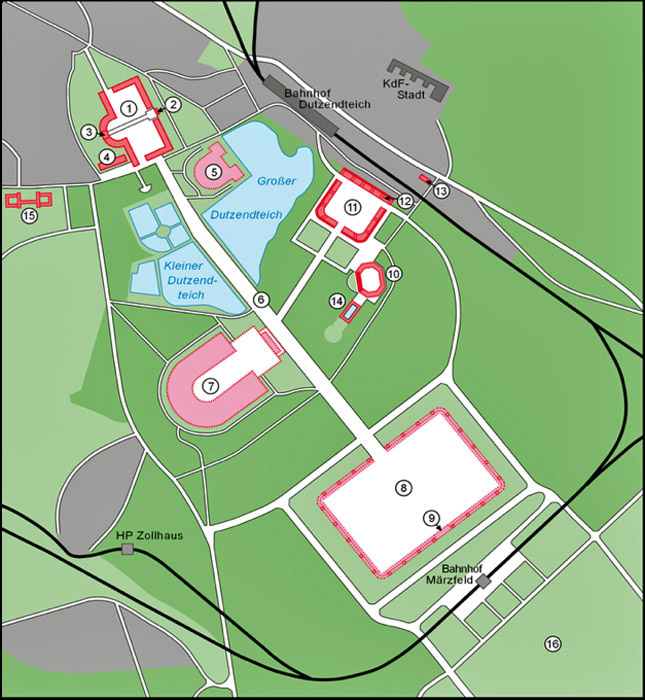
Transported on a bus supplied by Viking, we stopped only once; so, our tour was, indeed, minimal. However, with the help of photos from the Internet, a reader can gain an appreciation of what we did see and how it once appeared.
Congress Hall (#5 on the map above) is the largest remaining monumental Nazi building in Germany. From a drive-by of its backside, an observer may note a strong resemblance to Rome’s ancient Coliseum:
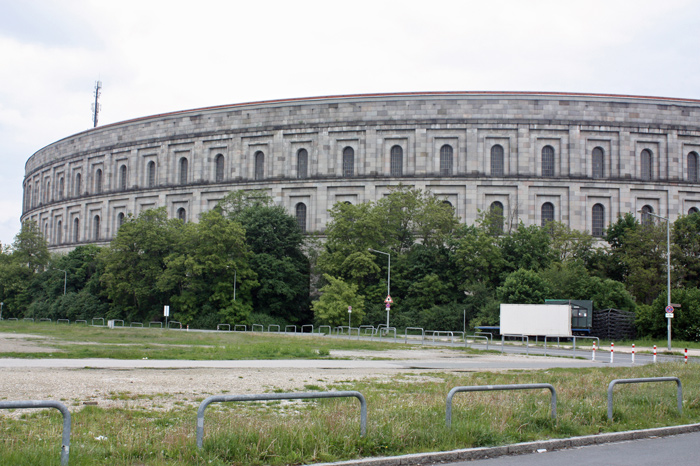
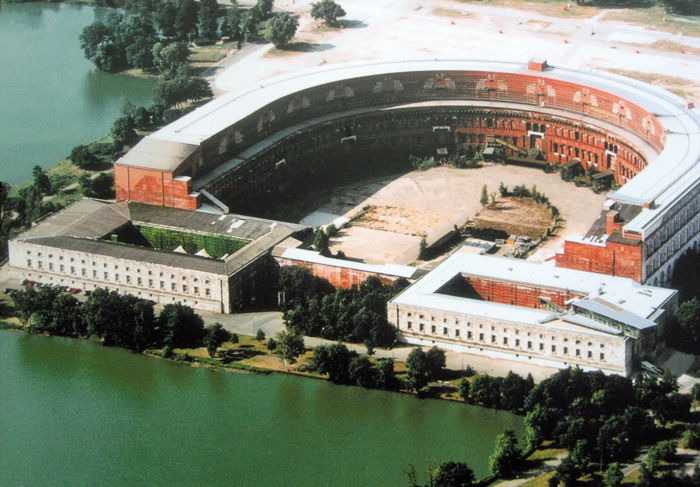
In the lower right of the photo above, atop the rectangular corner wing, is the diminutive Documentation Center. This museum was built in the mid-1990s to study the causes and consequences of National Socialism. Why its odd shape? The architect explained that it “spears through” the northern wing as a pun on the name and a refutation of Albert Speer, the chief designer of the Nazi Rally Grounds.
Our single tour stop was at Zeppelin Field (#11). This enormous area could hold 100,000 performers while the grandstand (some 400 yards long) could accommodate 60,000 spectators. The grandstand’s main podium was, of course, reserved for Hitler. The photo below shows the complex in use after its completion in 1937:
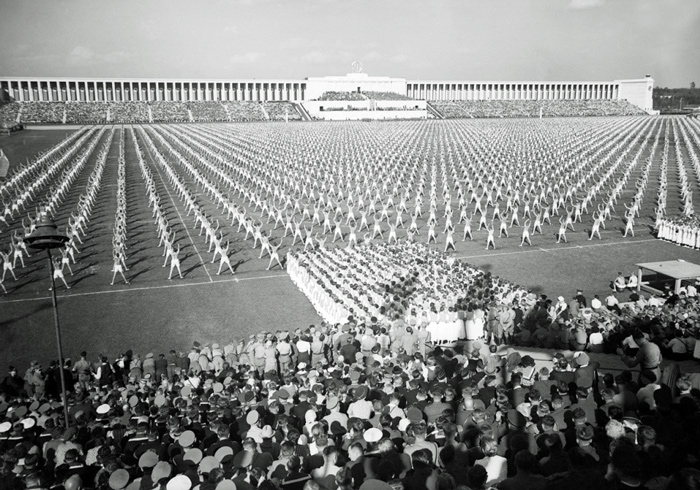
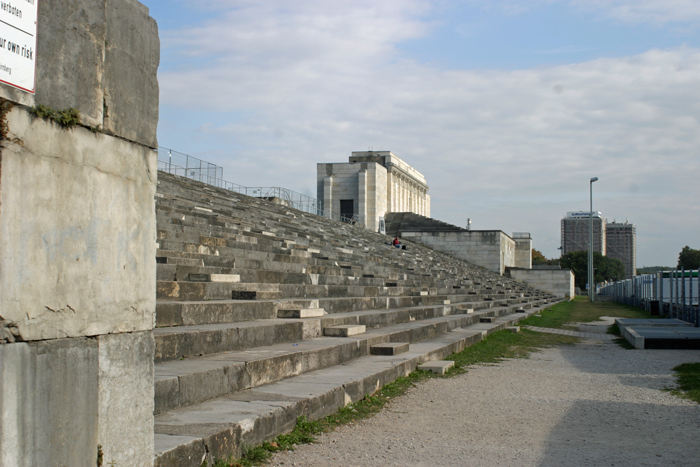

Another monolithic plan for the Rally Grounds was the German Stadium (#7). Intended to hold 400,000 spectators in the “world’s largest sports stadium,” only the excavations were done by 1945. The void later filled with water and is now a lake.
Linking the various Rally Ground components together and serving as a central axis, the Great Road (#6) was finished by 1939. It was 180’ wide and 1 1/4 mile long. To provide a symbolical connection between historical Nuremberg, it was aligned with the Castle and Old Town. Its post-war uses have been more practical. Immediately after the war, the Great Road served as a runway for US Air Force planes. Later, it was redeveloped into a car park for major events.
It would not be surprising if many modern Nurembergers wished the Nazi Rally Ground buildings outside their city would “just go away.” What they represented was truly horrible and, in some ways, is still an embarrassment. What to do with the sprawling remains of Hitler’s mass rally grounds is a contentious issue. Some would have them obliterated. Others contend they should become a preserved memorial, like the Auschwitz death camp in Poland.
Some demolition did occur after the war. However, the Rally Grounds have since been turned into a memorial and protected by German law, though without renovation or improvements being made.
With further demolition not possible because of the protected status of the complex, there seem to be only two choices. (1) Allow them to decay naturally which would mean keeping the public out for safety’s sake. (2) Stabilize them without restoration to allow the public access. Doing nothing is not an option.
After carefully studying the problem, Nuremberg is on the verge of spending around 100 million dollars to keep the Rally Grounds safe for visitors. It will take a delicate balance to memorialize the ruins without glorifying the past.